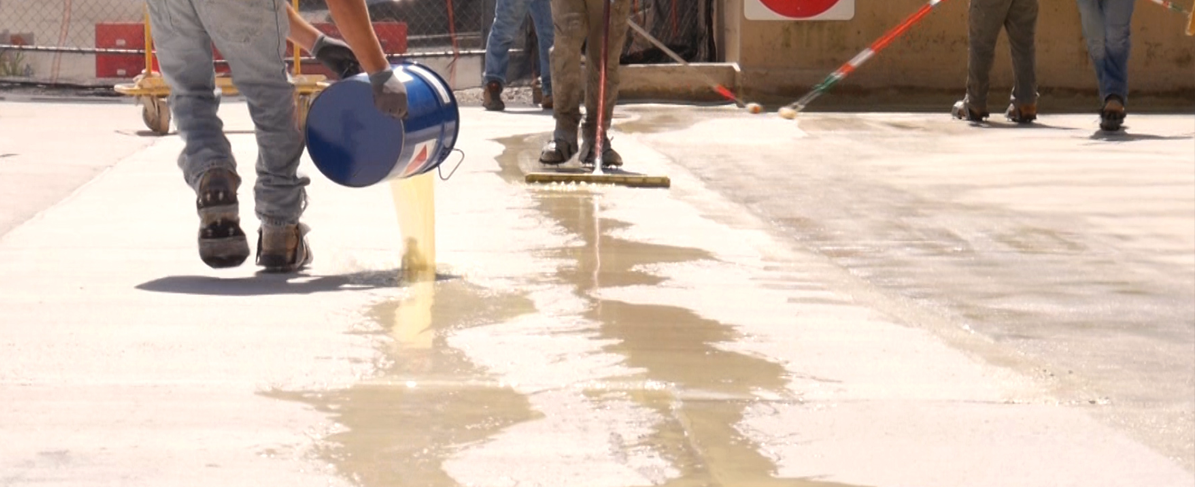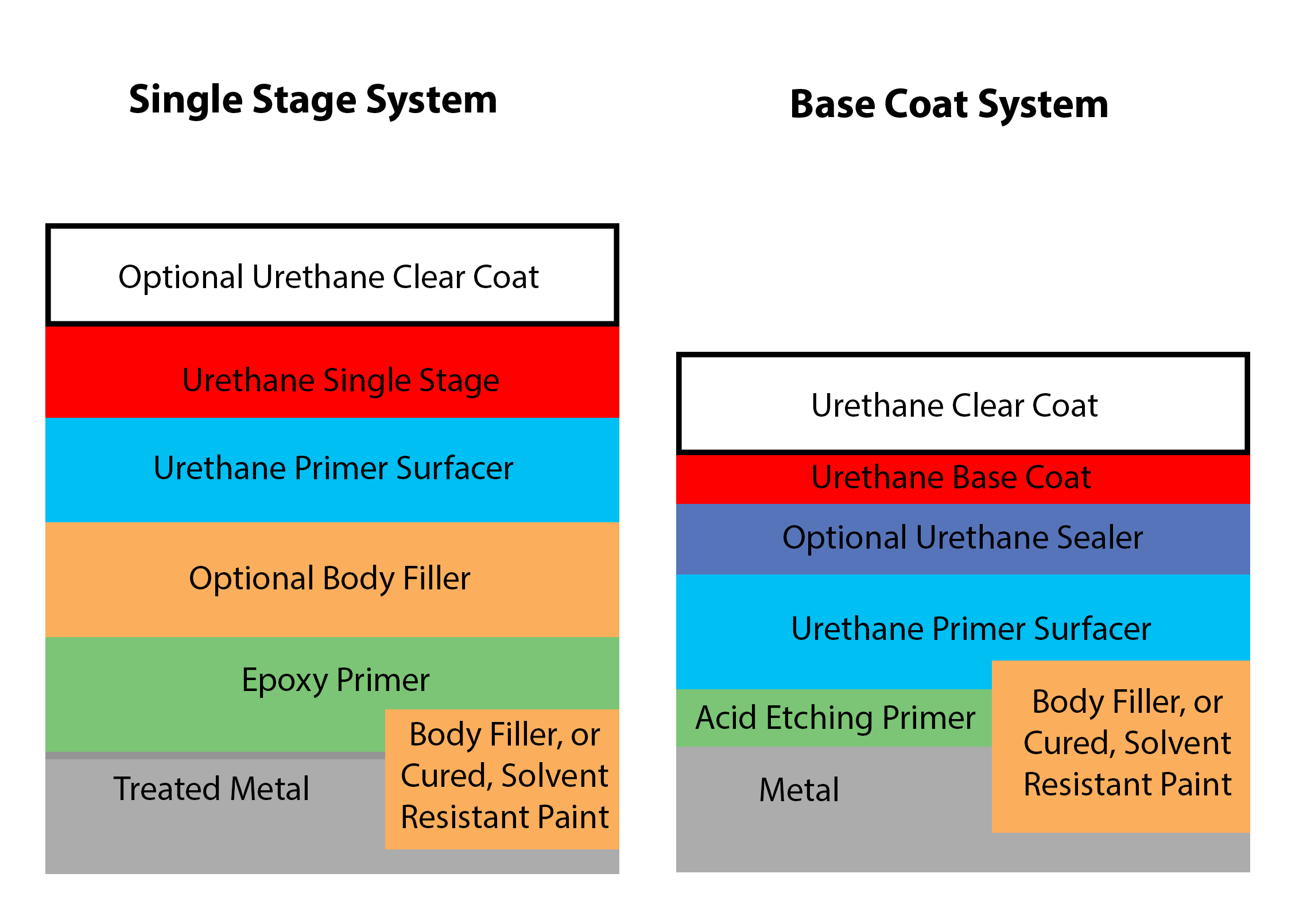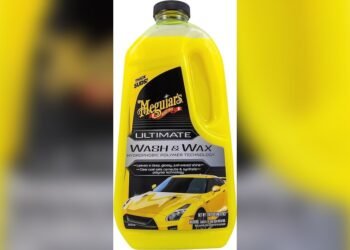When it comes to prepping your vehicle or project for paint, choosing the right primer can make all the difference. You might be wondering: should you go with epoxy primer or urethane primer?
Both have their strengths, but knowing which one fits your specific needs can save you time, money, and frustration. In this guide, you’ll discover the key differences between epoxy and urethane primers, how each affects the final finish, and which one is best suited for your project.
Keep reading to make an informed choice that ensures your paint job looks flawless and lasts longer.

Credit: www.tremcosealants.com
Epoxy Primer Basics
Epoxy primer is a key material in many painting and coating projects. It acts as a base layer that protects surfaces and helps paint stick better. Understanding its basics helps in choosing the right primer for your work.
This section explains what epoxy primer is made of, its benefits and limits, and where it is commonly used.
Composition And Properties
Epoxy primer is made from epoxy resins and hardeners. When mixed, they create a strong chemical bond. This bond gives the primer excellent adhesion and corrosion resistance.
The primer forms a tough, durable layer that seals metal surfaces well. It resists moisture and chemicals, preventing rust and damage.
Benefits And Limitations
Epoxy primer offers strong protection against rust and corrosion. It sticks well to bare metal and creates a smooth base for paint. The primer also improves paint durability and finish quality.
On the downside, epoxy primer can be harder to apply than other primers. It usually requires careful mixing and fast application before it starts to cure. It also needs sanding before applying topcoats.
Common Uses
Epoxy primers are often used in automotive and industrial painting projects. They are ideal for bare metal surfaces, especially in areas exposed to moisture.
They also work well for marine applications and machinery that needs strong corrosion protection. Epoxy primers prepare surfaces for further coatings and extend the life of the paint.
Urethane Primer Essentials
Urethane primer is a popular choice for many automotive and industrial projects. It provides a smooth base for paint and protects the surface underneath. This primer is known for its durability and resistance to chemicals and weather. Understanding its makeup and uses helps in choosing the right primer for your work.
It works well on various surfaces and offers good adhesion. Urethane primers dry quickly and can be sanded easily. Knowing its advantages and drawbacks lets you make informed decisions.
Chemical Makeup
Urethane primer is made from polyurethane resins. These resins form a tough, flexible layer. The chemical reaction occurs when the primer mixes with a hardener. This process creates a strong bond to the surface. The primer resists moisture, chemicals, and impact. Its composition helps it last longer under harsh conditions.
Advantages And Drawbacks
Urethane primer offers excellent durability and adhesion. It resists chipping and cracking over time. It also dries faster than many other primers. This speeds up the painting process. The primer sands smoothly for a fine finish.
On the downside, urethane primers can be more expensive. They require careful mixing and proper ventilation. The fumes may be strong and need safety precautions. Also, the application needs skill to avoid runs and uneven coverage.
Typical Applications
Urethane primer is widely used in automotive painting. It prepares metal and plastic parts for topcoats. It also finds use in industrial equipment and machinery. The primer protects against rust and corrosion. It suits projects needing strong, long-lasting finishes.
Many professionals prefer urethane primer for custom paint jobs. It works well under urethane and acrylic paints. Its flexibility allows it to handle temperature changes without cracking.
Performance Comparison
Comparing epoxy primer and urethane primer highlights key differences in performance. Each primer type offers unique benefits depending on the project needs. Understanding these differences helps in choosing the right primer for lasting results.
Adhesion And Durability
Epoxy primer bonds strongly to metal surfaces. It creates a tough base that holds paint well. This primer resists chipping and peeling over time. Urethane primer also adheres well but is less durable than epoxy. It offers a smoother finish, ideal for topcoat layers. For long-lasting adhesion, epoxy primer often performs better.
Corrosion Resistance
Epoxy primer provides excellent protection against rust. It seals metal surfaces tightly, blocking moisture and air. This makes it ideal for vehicles and outdoor metal parts. Urethane primer has moderate corrosion resistance but needs a good topcoat to protect fully. Epoxy’s resistance reduces the chance of rust forming under paint.
Flexibility And Sandability
Urethane primer is more flexible than epoxy. It handles slight surface movement without cracking. This flexibility makes it easier to sand and shape. Epoxy primer is harder and less forgiving during sanding. It requires careful sanding to avoid damaging the layer. Urethane primer is preferred for projects needing smooth finishes and easy sanding.

Credit: www.youtube.com
Application Techniques
Application techniques for epoxy and urethane primers differ in key ways. Each primer type requires specific steps for best results. Proper application ensures durability and a smooth finish. Understanding these techniques helps avoid common painting problems and improves adhesion.
Surface Preparation
Start with a clean, dry surface. Remove all dirt, grease, and rust. Use a degreaser or appropriate cleaner. For epoxy primer, bare metal must be free of oils. Urethane primer also demands a clean surface but tolerates minor imperfections better. Sand the area with medium-grit sandpaper to create a texture. This helps the primer bond well. Wipe away sanding dust before applying the primer.
Curing Times
Epoxy primer cures faster than urethane primer. Usually, epoxy hardens within 20 to 30 minutes. Full cure may take several hours, depending on temperature. Urethane primer requires more time, often up to 24 hours. Follow the product instructions closely. Painting over uncured primer can cause poor adhesion. Patience during curing leads to a stronger paint job.
Sanding And Profiling
Sanding epoxy primer is essential before applying urethane topcoat. Use fine-grit sandpaper to create a smooth, yet slightly rough surface. This “profile” improves urethane adhesion. Urethane primers also need sanding but usually less aggressive. Avoid sanding too deep to prevent exposing the metal. Clean the surface thoroughly after sanding. Proper profiling helps the final paint layer stay intact longer.
Compatibility With Paints
Choosing the right primer affects how well your paint sticks and lasts. Compatibility with paints is key. Epoxy and urethane primers differ in how they interact with various topcoats. Knowing these differences helps avoid peeling and uneven finishes. This section explains how urethane paint works over epoxy primer, the ideal recoat times, and mixing brands.
Using Urethane Paint Over Epoxy Primer
You can apply urethane paint over epoxy primer successfully. First, ensure the epoxy primer is fully cured and dry. Curing time depends on the product and temperature. If you miss the recoat window, sanding the epoxy surface is essential. Sanding creates a rough profile for better adhesion of urethane paint. Always clean the surface well after sanding to remove dust and oils. Follow the primer’s technical data sheet for exact instructions.
Recoat Windows And Guidelines
Each primer has a recoat window, the time you can apply paint without sanding. Epoxy primers usually allow recoating within a few hours. After this period, sanding is necessary to avoid paint failure. Urethane primers have different recoat times, often longer. Check product labels for times and temperature ranges. Proper timing prevents issues like bubbling or peeling. Always work in recommended conditions for best results.
Mixing Brands And Systems
Using primers and paints from the same brand is safest. Manufacturers test compatibility within their systems. Mixing different brands can cause chemical reactions or poor adhesion. If mixing brands, test on a small area first. Follow all product guidelines carefully. Use recommended hardeners and reducers. Avoid shortcuts to ensure a smooth, durable finish. Compatibility matters more than you might think.
Choosing The Right Primer
Choosing the right primer is essential for a successful paint job. Different primers offer unique benefits and fit specific needs. Picking the correct one ensures better adhesion, durability, and finish quality.
Understanding key factors helps in making the right choice between epoxy primer and urethane primer. Consider project needs, environmental conditions, and budget to guide your decision.
Project Requirements
Assess the surface you need to paint. Epoxy primers excel on bare metal and rusted areas. They provide strong corrosion resistance and adhesion. Urethane primers offer better flexibility and fill minor imperfections well. For automotive or industrial projects, choose based on surface type and final finish needed.
Environmental Factors
Temperature and humidity affect primer performance. Epoxy primers cure well in cooler, drier conditions. Urethane primers work better in warmer environments and dry faster. Also, consider exposure to chemicals or moisture. Epoxy offers superior chemical resistance, while urethane resists UV damage better.
Budget And Availability
Epoxy primers tend to cost more but last longer. Urethane primers are often cheaper and easier to find. Factor in your budget and how soon you need the product. Availability in your local area may also influence your choice. Balance cost with performance for the best value.
Tips For Best Results
Achieving the best results with epoxy or urethane primers requires careful attention to detail. Proper steps ensure a smooth, durable finish that lasts. Small mistakes can affect adhesion and appearance. Follow these tips to enhance your project’s outcome and avoid common problems.
Following Manufacturer Instructions
Always read the primer’s instructions before starting. Each product has specific drying times and mixing ratios. Applying too soon or too late can cause adhesion issues. Use the recommended tools and techniques for application. Stick to the suggested temperature and humidity ranges. Doing this ensures the primer bonds well and cures properly.
Using High-build Primers
High-build primers help fill small scratches and imperfections. They create a smoother base for the topcoat. Apply them evenly in thin layers to avoid runs or sagging. Sand lightly between coats for a flat surface. This step improves paint adhesion and final appearance. Using high-build primers is especially helpful after epoxy primer for better surface texture.
Cleaning And Maintenance
Clean the surface thoroughly before priming. Remove dirt, grease, and dust using appropriate cleaners. Any residue will weaken the primer’s bond. After sanding, wipe the area with a tack cloth. Maintain a clean workspace to prevent contamination. Good cleaning habits lead to stronger adhesion and a flawless finish.

Credit: help.summitracing.com
Frequently Asked Questions
Can I Put Urethane Paint Over Epoxy Primer?
Yes, urethane paint can go over epoxy primer. Ensure the epoxy is fully cured, sand it to create adhesion, and clean the surface before painting. Always follow the manufacturer’s instructions for best results and compatibility.
Why Use Urethane Primer?
Urethane primer offers excellent adhesion, flexibility, and corrosion resistance. It creates a smooth base for paint and enhances durability. This primer dries quickly and resists chemicals, ensuring long-lasting, high-quality finishes on automotive and industrial surfaces.
When Should You Use Epoxy Primer?
Use epoxy primer on bare metal to prevent rust and improve paint adhesion. Apply it before urethane or other topcoats. Ensure the primer fully cures and sand if needed for best results. Follow product instructions for optimal timing and surface preparation.
What Is The Difference Between Epoxy And Urethane?
Epoxy offers strong adhesion and chemical resistance but is less UV stable. Urethane provides better UV protection, flexibility, and durability. Epoxy cures faster; urethane resists weathering longer. Choose epoxy for primers and urethane for topcoats or outdoor use.
What Is The Main Difference Between Epoxy And Urethane Primers?
Epoxy primers offer excellent corrosion resistance, while urethane primers provide better flexibility and smoothness.
Conclusion
Choosing between epoxy primer and urethane primer depends on your project needs. Epoxy primer offers strong corrosion protection and excellent adhesion. Urethane primer provides a smooth surface and good flexibility for paint. Both primers have unique benefits that suit different situations.
Always follow product instructions for best results. Proper surface preparation ensures paint lasts longer. Understanding these differences helps you make the right choice. Consider your environment, budget, and desired finish before deciding. This knowledge leads to a better, longer-lasting paint job.

















